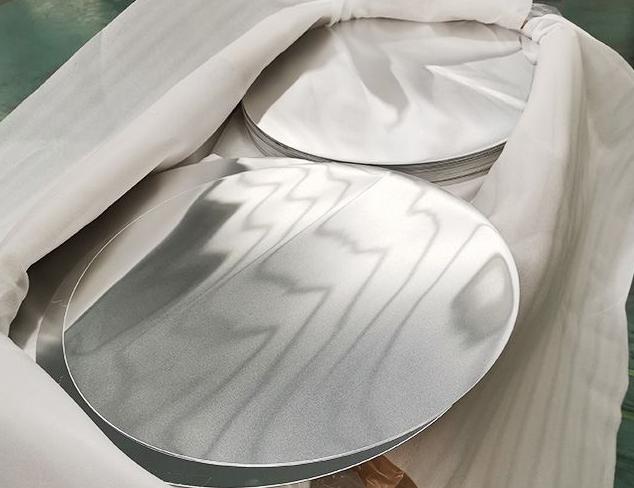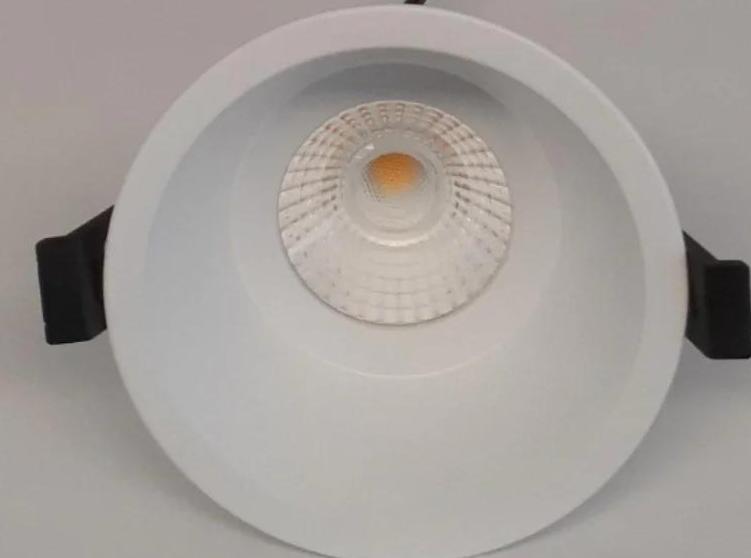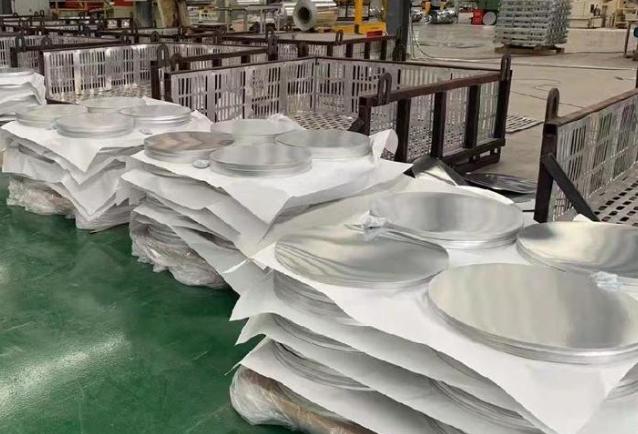Aluminium Circle Thickness Differences: How to Select the Right Gauge
Picking the right thickness for aluminium circles matters a lot if you want your project to work the way you expect it to. Whether you are making pots and pans, car parts, or light fixtures, knowing how different thicknesses behave keeps you from guesswork.
This quick guide breaks down what thickness means, lists the most-used gauges and where people apply them, highlights the factors that should influence your choice, and explains how to measure the thickness the right way.
Understanding Fundamentals of Aluminium Circle Thickness

The thickness of an aluminium circle is a key detail that shapes how well the piece works in any given job. Usually noted in millimetres, or the lower the gauge, the thicker the sheet, the right measurement directly ties to strength, ease of shaping, and the bottom line.
Aluminium circles, often called discs, are valued because they are light, resist corrosion, and machine easily. Yet choosing a thickness that is too thin or too thick can cause parts to fail, waste money, or slow down the factory floor.
Why Thickness Matters
- Strength & Durability-thicker discs cope better with heavy loads and jolts, so they suit cranes, rail cars, and other demanding machines.
- Formability-thin gauges, roughly 0.2 to 1 mm, stamp, bend, and spin quickly; pieces above about 3 mm call for pricey presses and skilled operators.
- Heat Conductivity- kitchen pans often use a middle thickness of 1 to 3 mm to spread heat evenly without hot spots.
- Cost & Weight-thinner blanks cut raw material bills and lighten the load, yet they rarely hold up when bolted onto a truck frame.
Manufacturers, whether making saucepans, car panels, or factory jigs, must match thickness to task. Doing so delivers parts that last, perform as promised, and keep expenses in check.
By considering load requirements, fabrication techniques, and the surrounding environment, firms can choose the gauge that best meets each project’s needs.
Common Aluminium Circle Thicknesses and Their Applications
When it comes to choosing an aluminium circle, thickness ranks among the most important details to weigh. Often referred to as gauge, this dimension determines the disc’s strength, bendability, weight, and the jobs it can realistically handle. Although circles are rolled in many thicknesses, industry practice usually sorts them into three broad bands: thin (0.2 to 1 millimetre), medium (1 to 3 millimetre), and thick (3 millimetre and upwards). Each band features distinct mechanical properties and common applications, so grasping the differences lets you pick the right circle for any task.
Thin Gauges (0.2mm – 1mm)
Aluminium discs, a few tenths of a millimeter thick-roughly between 0.2 mm and 1 mm-welcome jobs that demand low mass yet generous malleability. At these gauges, aluminium bends freely; artisans can spin, deep-draw, or emboss it into fine detail without cracking. The outer skin stays smooth, a small but critical trait for any part that will see the public eye.
Ideal Applications
- Cookware Components: Thin circles measuring 0.3 mm to 0.6 mm slip into non-stick lids and feather-light pot edges, letting heat spread quickly while keeping the set easy to lift.

- Reflective Surfaces: Bathed in a bright finish, discs from 0.5 mm to 0.8 mm serve as decorative lamp reflectors, where a flawless mirror surface matters far more than brute strength.
- Signage and Decorative Panels: Even at 0.2 mm, processors cut grand letters or shapes that hang easily yet resist bending when secured to a backing board.
That said, ultra-thin circles still fall short of true stiffness. In load-bearing frames or other stressed parts, they may give, dent, or simply lose the line.
Medium Gauges (1mm – 3mm)
Aluminium disks sized between 1 mm and 3 mm strike an optimal blend of ease of shaping and dependable strength. Within that middle band, the metal accepts routine processes—bending, shallow drawing—and returns little springback, leaving the finished part feeling solid.
Ideal Applications
- Appliance housings: Circles between 1.5 mm and 2.5 mm form panels in washing machines, dryers and air-conditioners, offering enough toughness for daily use while remaining light for straightforward installation.
- Automotive trim and components: Disks ranging from 1.2 mm to 2.0 mm fit door panels, interior rings and speaker grilles, resisting moderate mechanical loads and holding shape under heat.
- Lighting fixtures: Medium-gauge alloy, usually 1.0 mm to 2.0 mm thick, supplies the reflectivity required for energy-saving lamps and the stiffness needed to carry mounting hardware.

Although more rigid than thin gauges, medium-thickness circles can be more challenging to process in high-precision deep-draw applications. They also cost more per unit area than thin gauges, which can be a factor in high-volume, low-margin products.
Thick Gauges (3 mm – 6 mm+)
Circles of aluminium that are 3 millimetres thick or thicker give parts the stiffness and load capacity engineers often demand. This extra thickness is vital in situations where a component must hold its shape under force, stay straight over time, and shrug off dents. Because the sheet is so strong, final profiles can only be cut and formed with heavy stamping presses or high-end CNC machines.
Ideal Applications
- Industrial Components: Dense circles between 4 millimetres and 6 millimetres make excellent pump housings, valve bodies, and robust brackets, since the thickness guards against extreme pressure, fatigue, and corrosive atmospheres.
- Pressure Vessels and Cookware: For pressure cooker lids and heavy flanges, discs sized from 3.5 millimetres to 5 millimetres deliver the tight seals and safety margins that elevated heat and pressure demand.

- Structural Panels: Aircraft and marine builders sometimes specify circles up to 6 millimetres thick in decks, bulkheads, and support rings, trading the weight of steel for aluminium that still resists bending and buckling.
Processing the thicker gauges means machines need extra tonnage, which can quickly wear out dies and cutters. The material itself is heavier, so trucking and loading fees climb in line with the added mass. Surface work—such as buffing, polishing, or anodising—also stretches lead times because thicker stock takes longer to treat end-to-end.
When you grasp the effect of every thickness band on formability, strength, and cost, you can choose the best aluminium disc gauge for a given task. Whether they are making a nearly weightless reflector or a robust machine component, pairing the right thickness with the application secures peak performance and resource efficiency.
What to Consider When Choosing Aluminium Circle Thickness
Selecting the right aluminium circle thickness is crucial to ensuring optimal performance, durability, and cost-effectiveness for your specific application.
- The first thing to ask is what the part has to do. Cookware usually calls for mid-gauge material around 1 to 3 millimeters so it heats evenly and can be shaped without cracking, while components meant to bear loads or resist bending need thicker stock that offers extra stiffness.
- Mechanical properties such as tensile strength, bendability, and resistance to rust, salt, or chemical wash-outs will narrow the choice further. Processes like deep drawing or spinning perform better with thinner, softer gauges, but anything that sits under a lot of weight or hangs off a frame should use a heftier sheet.
- Thickness affects both mass and cost in obvious ways. The thicker the disc, the heavier it is, the more metal you buy, and the more you pay for rolling and transport. A sensible design tries to mark the sweet spot where toughness meets lean spending.
- The way you intend to form or finish the part—milling, stamping, welding, or laser-cutting—must frame the choice as well. Hoping to run a delicate gauge through a heavy press may crack the sheet, while a robust tool might deform a thin one beyond repair. Add to that the specific alloy chosen; certain grades behave very differently at high temperatures or in salty air. For example, 5052 excels at welding but softens badly when overheated; 6061, on the other hand, gains strength after being aged, so users should pick an eventual profile allowed in manufacturing.
Talking early with material engineers or trusted suppliers helps spot these issues upfront and pin down the thickness that suits both performance targets and budget constraints.

Final Thought
Choosing the right aluminium circle thickness is critical for achieving the best results in your project. Whether you need thin, flexible discs for electronics or thick, durable sheets for industrial applications, understanding gauge differences ensures efficiency and cost-effectiveness.
If you’re unsure which thickness suits your needs, consult with an aluminium supplier who can guide you based on your specific requirements. Investing in the correct gauge will enhance product performance and longevity.

